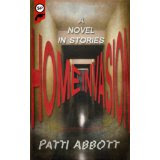
 Any discussion of Detroit will eventually lead to a discussion of the Heidelberg Project and Tyree Guyton. For an in depth look at it, simple google his name. For the purposes of My Town Monday, here's a tease. Twenty years ago, Guyton was looking for a way to express both himself and his frustration with the deterioration of his city. Guyton, with little money sought to make a statement about this via his own neighborhood.
Any discussion of Detroit will eventually lead to a discussion of the Heidelberg Project and Tyree Guyton. For an in depth look at it, simple google his name. For the purposes of My Town Monday, here's a tease. Twenty years ago, Guyton was looking for a way to express both himself and his frustration with the deterioration of his city. Guyton, with little money sought to make a statement about this via his own neighborhood.He began to paint colorful pictures on the neighboring abandoned house. He began collecting discarded objects and creating fields of vacuum cleaners, car hoods, dolls and shoes --all painted in bright colors. Easy to do in Detroit, where streets had begun to look rural due to demolished or falling-down housing. He nailed objects ro the houses themselves, hung bikes, did whatever he could to transform Heibelberg Street into a living work of art.
Not everyone approved of this. Some of the neighbors thought his work was mocking their poverty. Or that is wasn't art at all. It became controversial, a subject that divided the city. Was it art or an eyesore? The courts entered the debate and although they ruled his work was constitutionally protected as a genuine artistic expression, he City of Detroit in 1998 served Guyton with an order to dismantle the project or they would demolish it. Odd for a city that couldn't demolish the abandoned house he had painted his work on.
In 1999, the City demolished the site.
It's not over yet, however. Parts of it reappear. Guyton's art turns up in museums and private collection. Its still a part of Detroit.
Is it art or an eyesore? Look at the streets around Heidelberg and make your choice.

For more My Town Monday, go visit Travis Erwin at:http://traviserwin.blogspot.com/
















 Artwork by Pat Dosine.
Artwork by Pat Dosine.
















